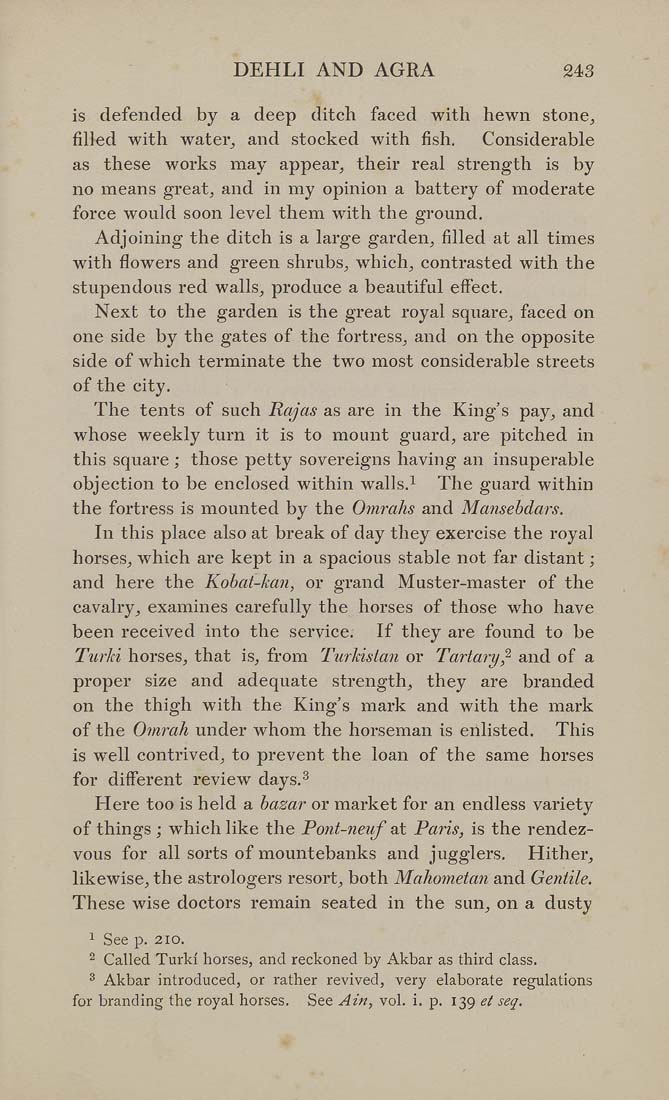DEHLI AND AGRA 243
is defended by a deep ditch faced with hewn stone,
filled with water, and stocked with fish. Considerable
as these works may appear, their real strength is by
no means great, and in my opinion a battery of moderate
force would soon level them with the ground.
Adjoining the ditch is a large garden, filled at all times
with flowers and green shrubs, which, contrasted with the
stupendous red walls, produce a beautiful effect.
Next to the garden is the great royal square, faced on
one side by the gates of the fortress, and on the opposite
side of which terminate the two most considerable streets
of the city.
The tents of such Rajas as are in the King's pay, and
whose weekly turn it is to mount guard, are pitched in
this square ; those petty sovereigns having an insuperable
objection to be enclosed within walls.^ The guard within
the fortress is mounted by the Omrahs and Mansebdars.
In this place also at break of day they exercise the royal
horses, which are kept in a spacious stable not far distant;
and here the Kobat-kan, or grand Muster-master of the
cavalry, examines carefully the horses of those who have
been received into the service. If they are found to be
Turki horses, that is, from Turkistan or Tartary^ and of a
proper size and adequate strength, they are branded
on the thigh with the King's mark and with the mark
of the Omrah under whom the horseman is enlisted. This
is well contrived, to prevent the loan of the same horses
for different review days.^
Here too is held a bazar or market for an endless variety
of things ; which like the Pont-neuf at Paris, is the rendez¬
vous for all sorts of mountebanks and jugglers. Hither,
likewise, the astrologers resort, both Mahometan and Gentile.
These wise doctors remain seated in the sun, on a dusty
1 See p. 210.
^ Called Turki horses, and reckoned by Akbar as third class.
^ Akbar introduced, or rather revived, very elaborate regulations
for branding the royal horses. See Ain, vol. i. p. 139 et seq.
|








